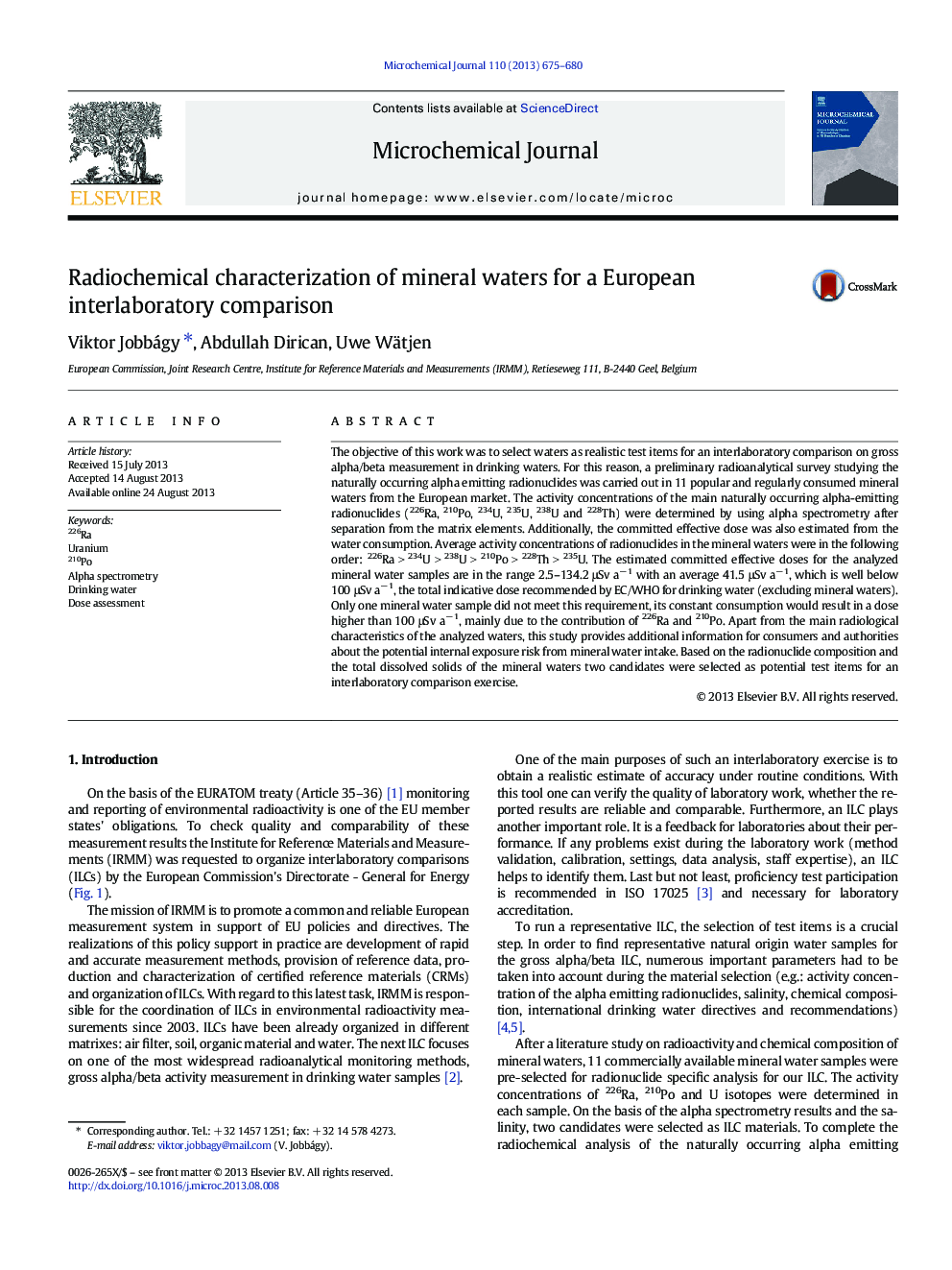| Article ID | Journal | Published Year | Pages | File Type |
|---|---|---|---|---|
| 7644181 | Microchemical Journal | 2013 | 6 Pages |
Abstract
The objective of this work was to select waters as realistic test items for an interlaboratory comparison on gross alpha/beta measurement in drinking waters. For this reason, a preliminary radioanalytical survey studying the naturally occurring alpha emitting radionuclides was carried out in 11 popular and regularly consumed mineral waters from the European market. The activity concentrations of the main naturally occurring alpha-emitting radionuclides (226Ra, 210Po, 234U, 235U, 238U and 228Th) were determined by using alpha spectrometry after separation from the matrix elements. Additionally, the committed effective dose was also estimated from the water consumption. Average activity concentrations of radionuclides in the mineral waters were in the following order: 226Ra > 234U > 238U > 210Po > 228Th > 235U. The estimated committed effective doses for the analyzed mineral water samples are in the range 2.5-134.2 μSv aâ 1 with an average 41.5 μSv a â1, which is well below 100 μSv a â1, the total indicative dose recommended by EC/WHO for drinking water (excluding mineral waters). Only one mineral water sample did not meet this requirement, its constant consumption would result in a dose higher than 100 μSv a â1, mainly due to the contribution of 226Ra and 210Po. Apart from the main radiological characteristics of the analyzed waters, this study provides additional information for consumers and authorities about the potential internal exposure risk from mineral water intake. Based on the radionuclide composition and the total dissolved solids of the mineral waters two candidates were selected as potential test items for an interlaboratory comparison exercise.
Related Topics
Physical Sciences and Engineering
Chemistry
Analytical Chemistry
Authors
Viktor Jobbágy, Abdullah Dirican, Uwe Wätjen,
